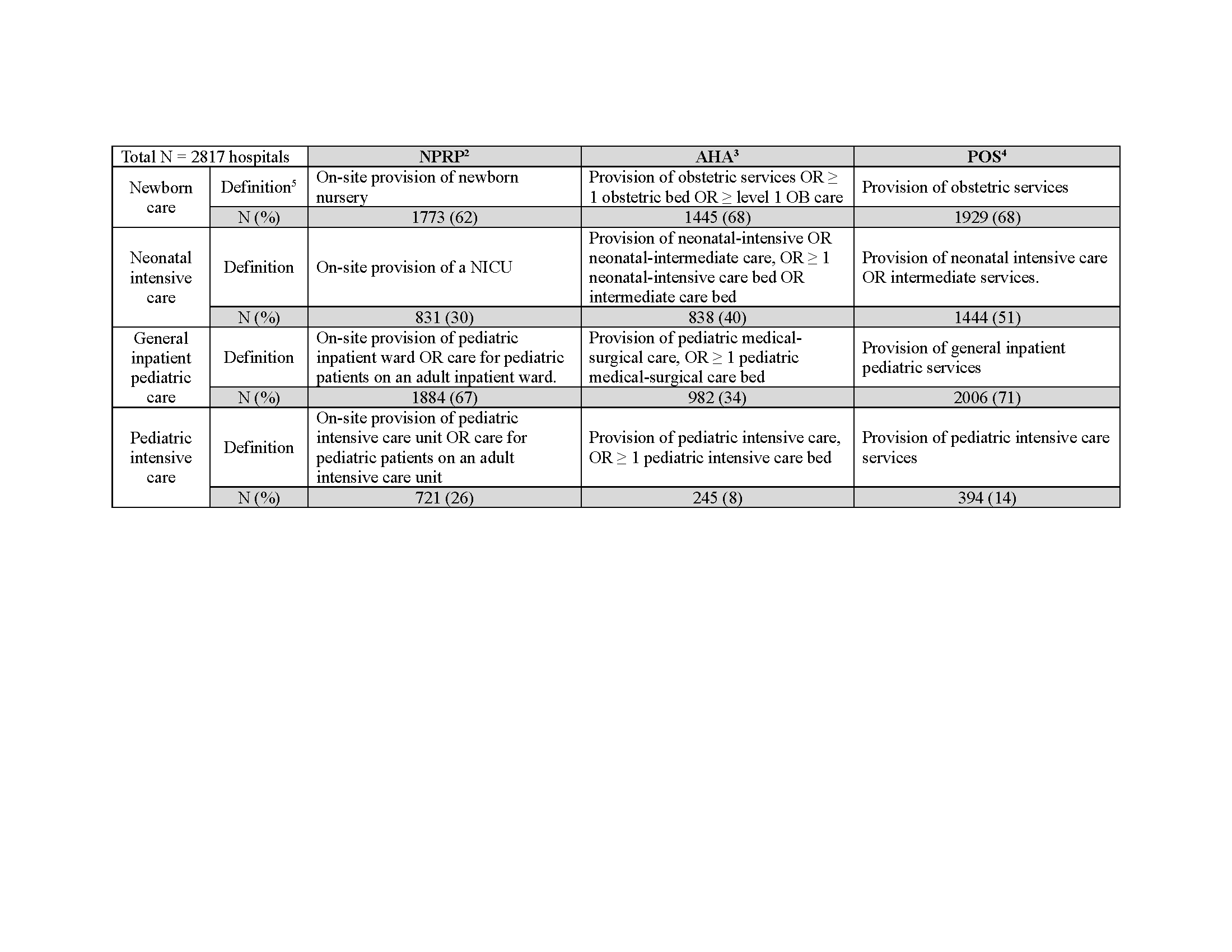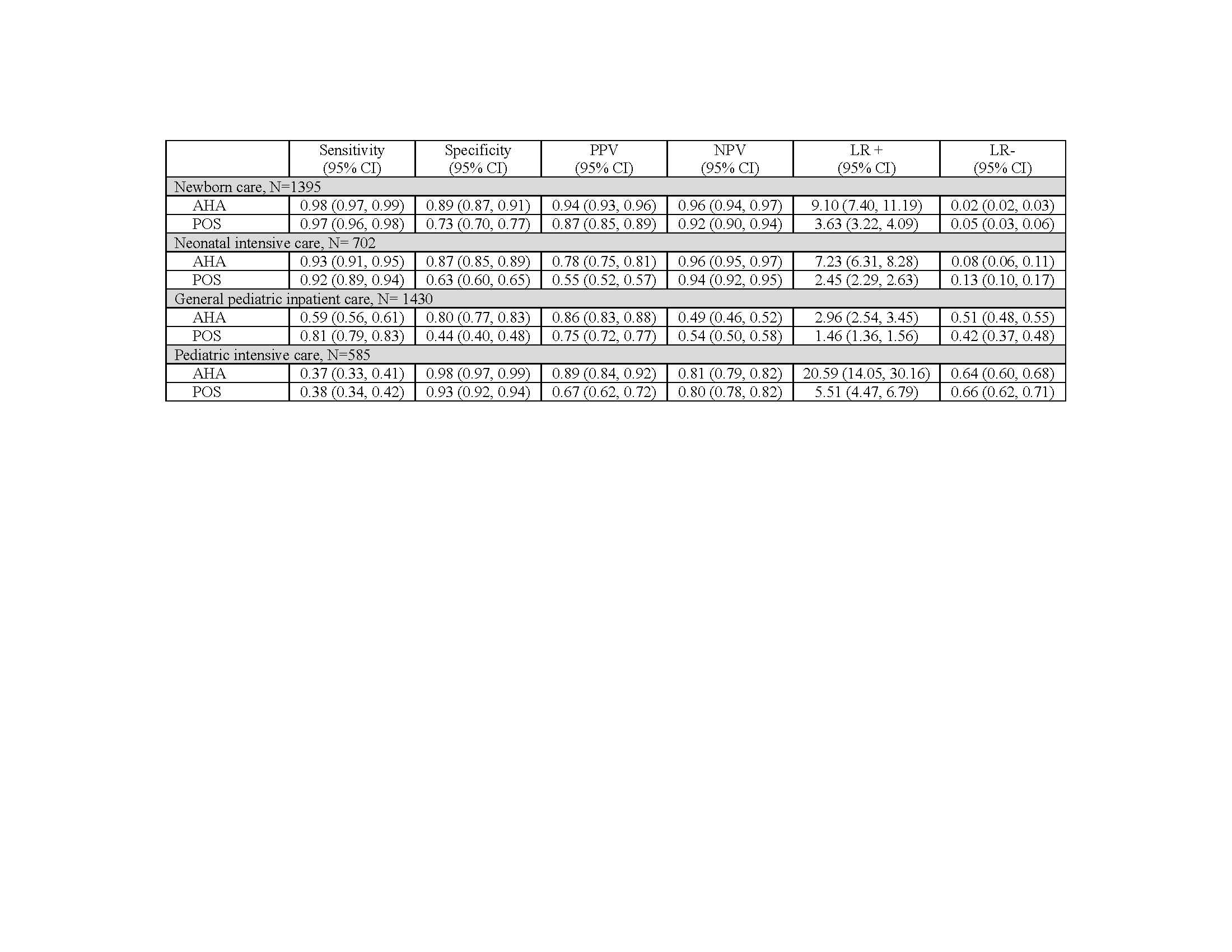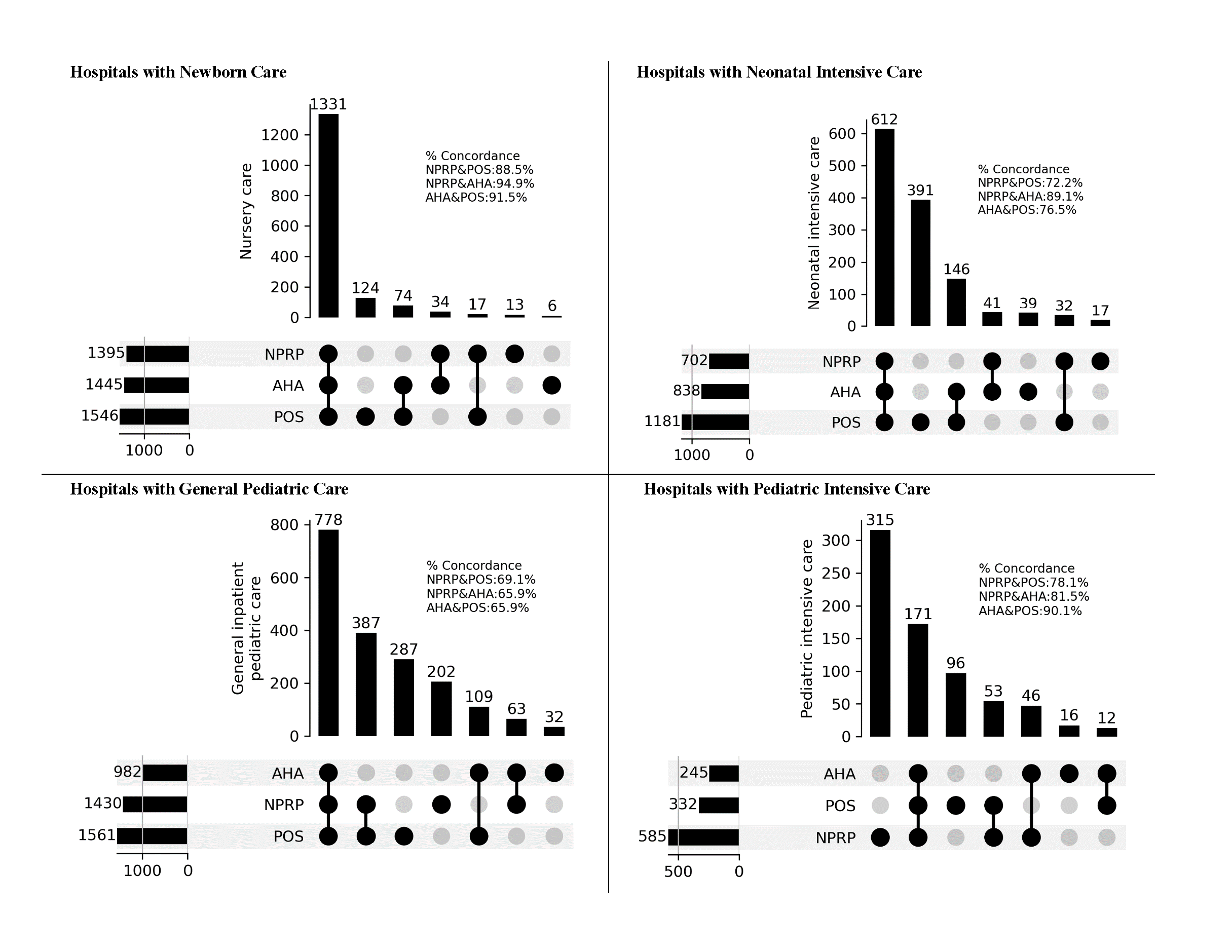Health Services Research
Session: Health Services Research 1: Workforce
289 - Discrepancies in the Provision of Pediatric Services across Three National Datasets
Saturday, May 4, 2024
3:30 PM - 6:00 PM ET
Poster Number: 289
Publication Number: 289.1400
Publication Number: 289.1400

Corrie E. McDaniel, D.O. (she/her/hers)
Associate Professor
University of Washington
Seattle, Washington, United States
Presenting Author(s)
Background: Regionalization of care and consolidation of pediatric services continues to make national headlines. Understanding the process of regionalization and loss of inpatient care is paramount for access to care for families, community planning, and hospital surge preparation. Most national statistics about provision of services are derived from a limited number of datasets, which have differing sampling frames, sizes, and designs.
Objective: We aimed to compare provision of hospital-based inpatient services across three national datasets.
Design/Methods: We compared responses to the American Hospital Association Annual Survey (AHA, a voluntary survey), the CMS Provider of Service File (POS, a mandatory form for all hospitals receiving Medicare payments), and the National Pediatric Readiness Project (NPRP, a pediatric-specific survey) from the most recent year available for all three datasets, 2021. We defined pediatric services for (1) newborn care, (2) neonatal intensive care (NIC), (3) general inpatient pediatric care, and (4) pediatric intensive care (PIC). We merged datasets to identify a shared set of hospitals and used descriptive statistics to compare datasets across the 4 service lines. Using the NPRP as the gold-standard given its pediatric-specific data collection approach, we assessed test characteristics for the provision of services for the AHA and the POS.
Results: Within datasets, the POS contained 5334 unique acute care hospitals, the AHA 4375, and the NPRP 3644. Within the AHA, 25% (n=1095) were missing pediatric service-line characteristics. 2817 hospitals were identified within all three datasets, and 2119 (76%) provided data on available pediatric services. Provision of newborn care varied the least between datasets, ranging from 62% (n=1773) of hospitals in the NPRP to 68% (n=1929) in the POS. Provision of general pediatric care varied the most, ranging from 34% (n=982) of hospitals in the AHA to 71% (n=2006) in the POS (Table 1). Concordance between datasets was highest for nursery care between the NPRP and AHA (94.9% concordance) and lowest for general pediatric care between the AHA and POS (65.9% concordance) (Figure). Overall, the positive predictive value ranged from 0.55 (95% Confidence Interval [CI] 0.52, 0.57) for NIC in the POS to 0.94 (95% CI 0.93, 0.96) for newborn care in the AHA (Table 2).
Conclusion(s): Commonly used datasets reporting provision of pediatric care within hospitals vary significantly. As large datasets are frequently used to inform policy regarding changes in pediatric care, a multi-dataset approach may be paramount to establish the accuracy of data reported.



